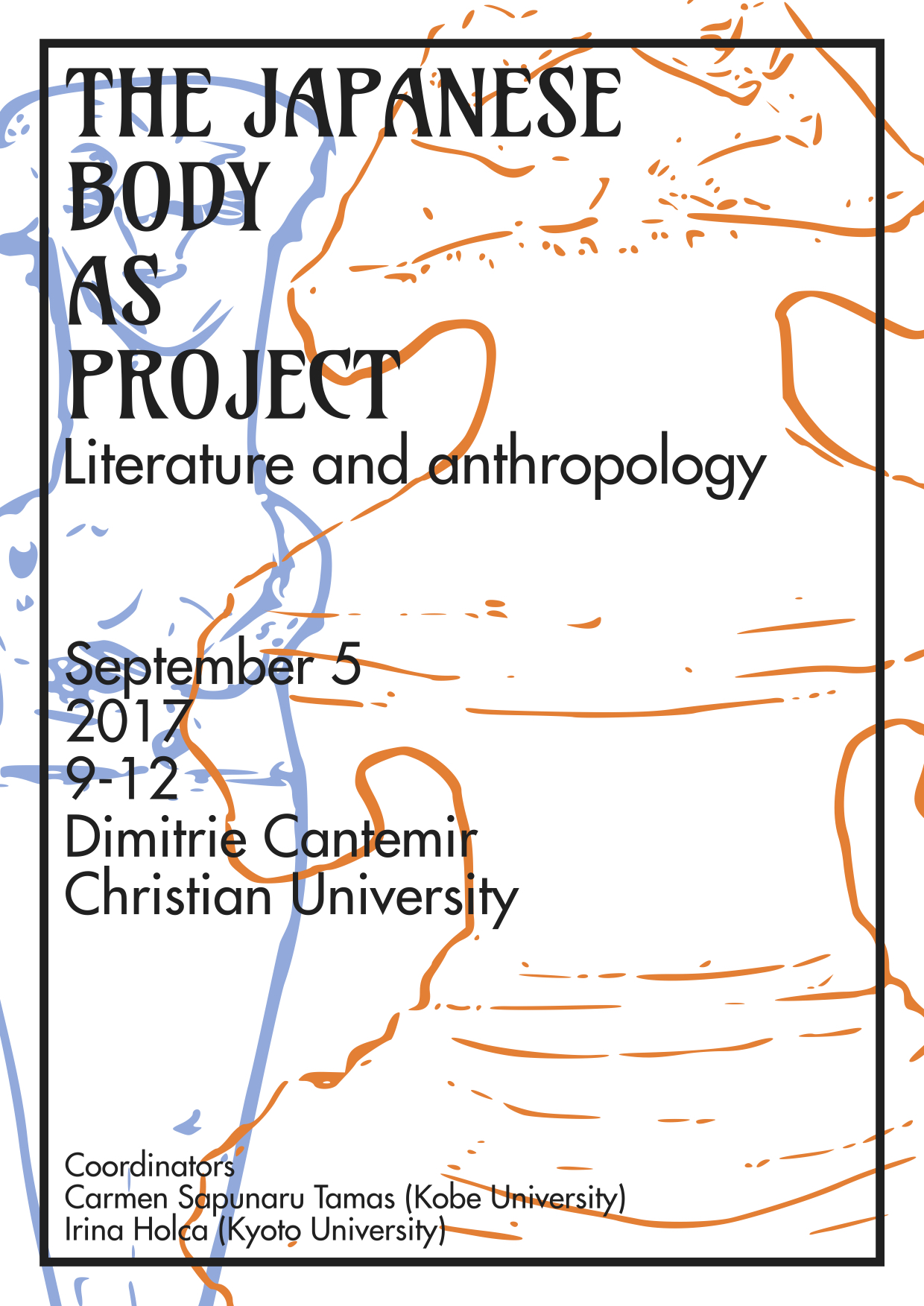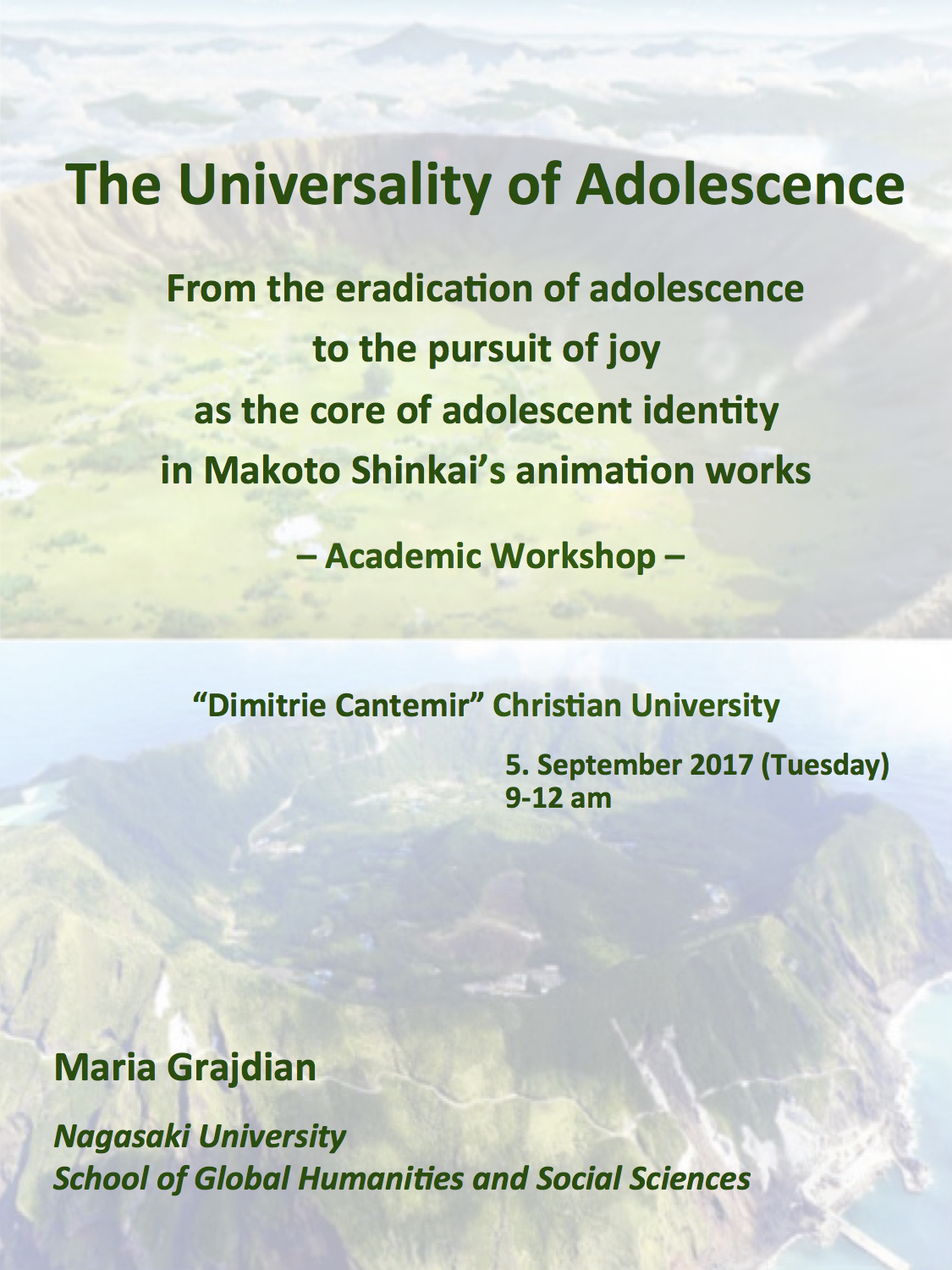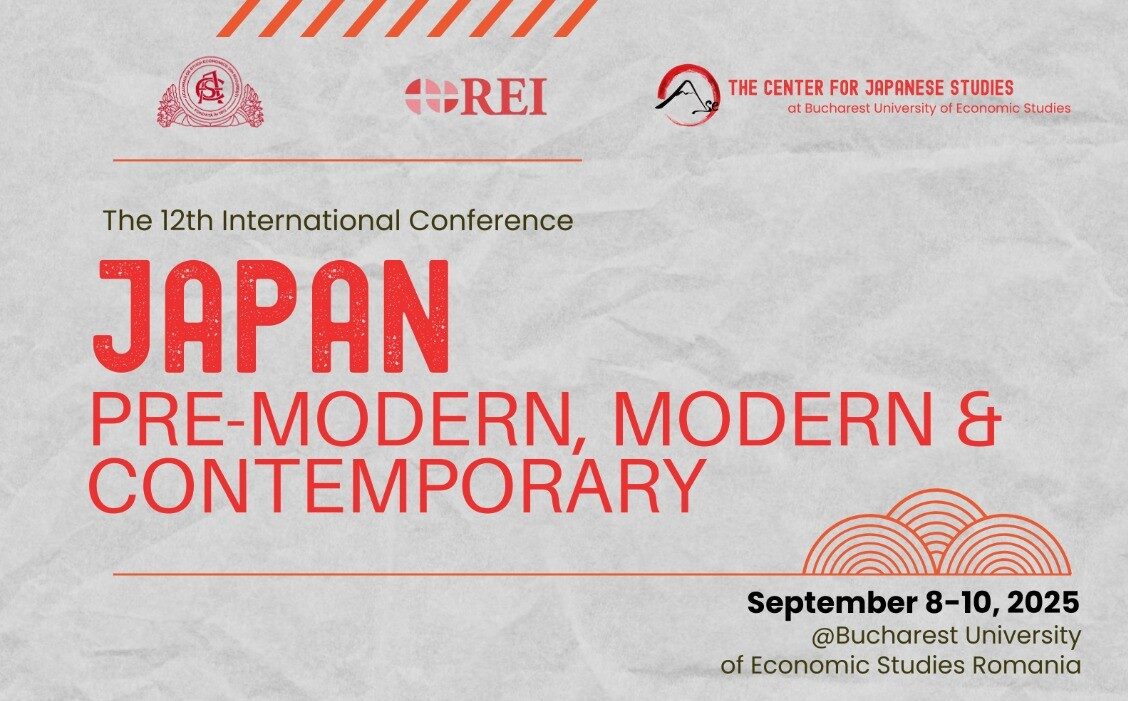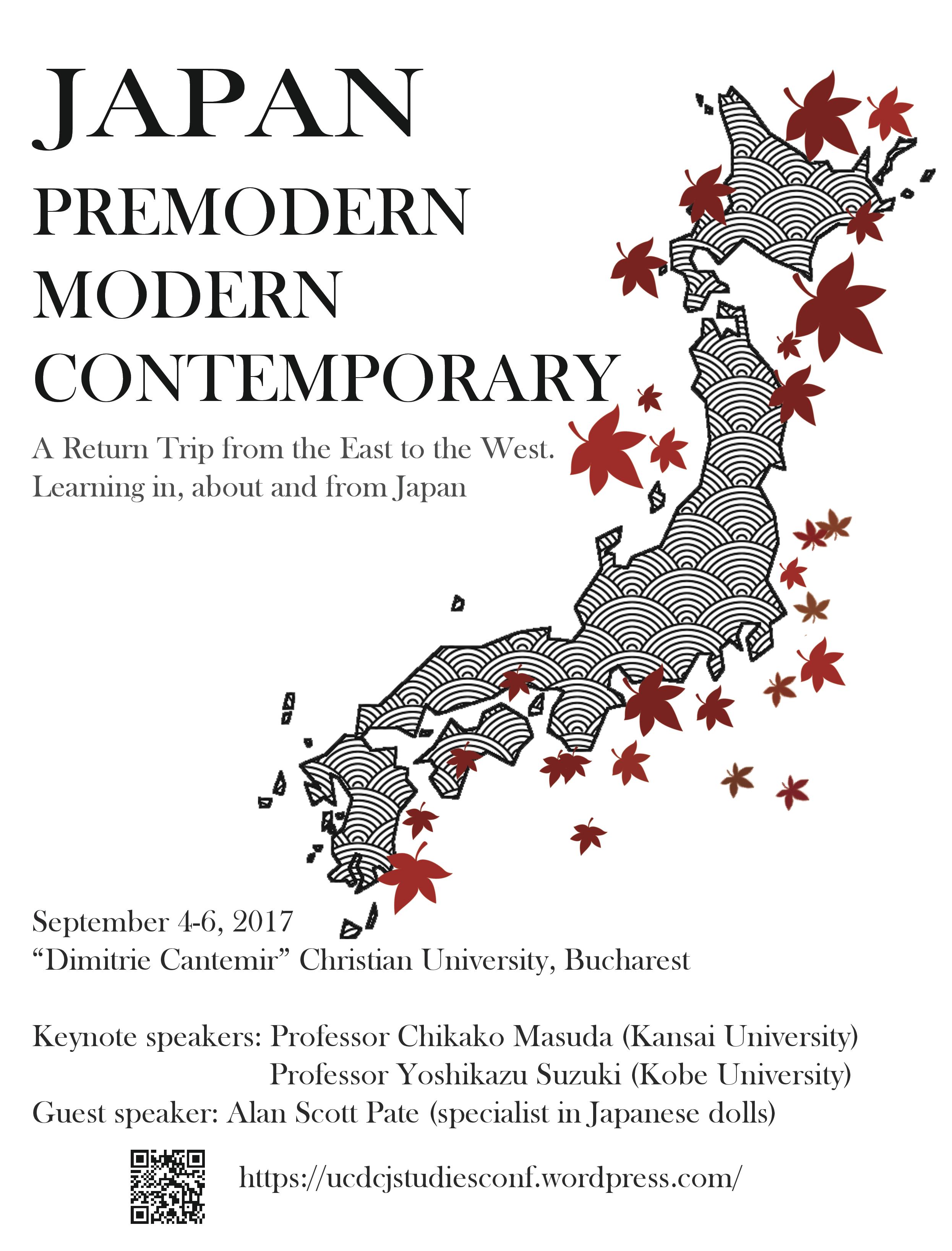Below you can find some information about the fifth edition of the conference (September 4-6, 2017): the program, the abstracts of the papers presented, and the outline of the two workshops. We had numerous sessions about culture, literature and linguistics, and about 40 participants from 13 countries.
Program:
*****
Abstracts:
*****
Workshops:
 Workshop 1: The Japanese Body as Project, in Literature and Anthropology
Workshop 1: The Japanese Body as Project, in Literature and Anthropology
Organizers: Dr. Irina Holca (Kyoto University) & Dr. Carmen Sapunaru-Tamas (Kobe University)
Instructors: Dr. Irina Holca & Monica Tamas (PhD Candidate, CESI)
Workshop structure:
Part I. We introduced various re-definitions of the human body in the (Japanese) contemporary world, focusing on how it is used by the individual to construct and enact the self, to cope with the reality of disease, aging, and mortality, but also to create relationships with society and the sacred. Examples from contemporary Japanese literature were discussed, in an attempt to analyse the “body as project” through the filter of the literary work.
Part II: Students worked in pairs/ groups to create posters reflecting their understanding of the concepts introduced in Part I. The posters, exhibited on the last day of the conference, analysed either a social phenomenon in contemporary Japan focusing on the role(s) played by the body within it, or a piece of contemporary Japanese literature in which the body is essential. Analyses looking at the same body-related issue from the composite perspective of anthropology and literature were encouraged, as well as those that consider the “body as project” from a comparative viewpoint (e.g., Japan and Romania, etc).
***
 Workshop 2: The Universality of Adolescence: From the Eradication of Adolescence to the Pursuit of Joy as the Core of Adolescent Identity in Makoto Shinkai’s Animation Works
Workshop 2: The Universality of Adolescence: From the Eradication of Adolescence to the Pursuit of Joy as the Core of Adolescent Identity in Makoto Shinkai’s Animation Works
Organizer: Dr. Maria Grajdian, Nagasaki University
Workshop structure:
Part I: Participants were familiarized with the aesthetic-ideological universe of Shinkai Makoto’s anime works. The instructor explained these dimensions, while illustrating her statements with relevant fragments from the anime movies, and answering questions coming from the audience.
Part II: The second part was intended as a dynamic interaction between instructor and students, with three main areas:
- the (possible/probable) impact of Shinkai’s anime on the domestic and international animation industry
- the representation of gender and body dialectics
- the display of age as an ongoing social negotiation

